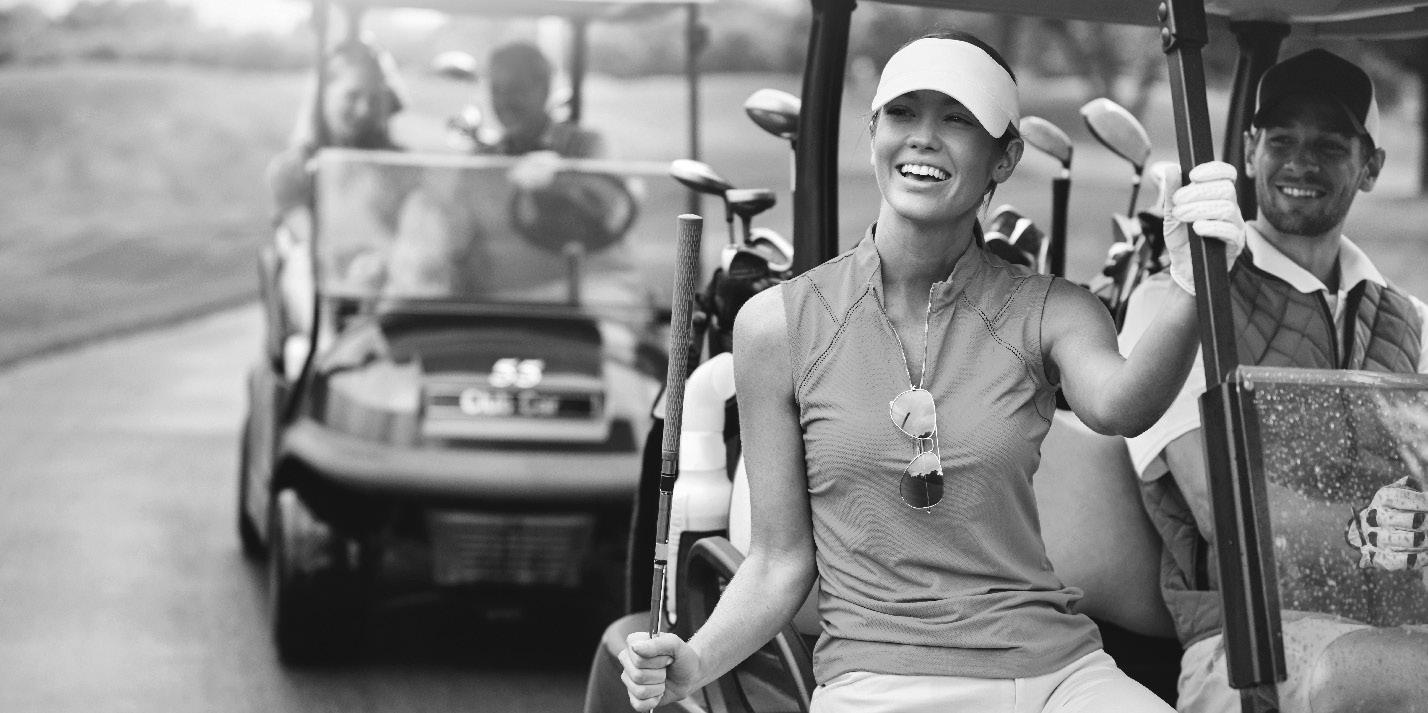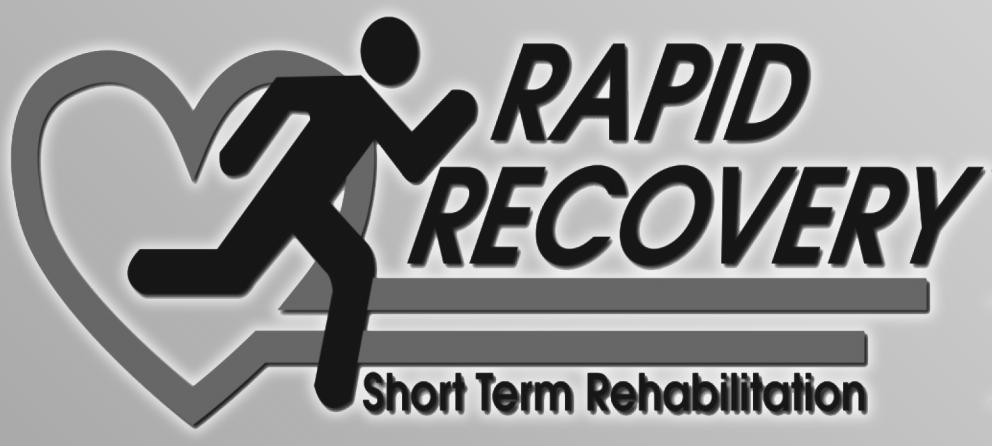Health Quarterly July 2024

A Special Supplement to the




A Special Supplement to the


In women’s health care, patient-centered care is more than just a buzzword—it’s a fundamental approach that prioritizes the distinct needs, preferences and values of each individual.
SIU Medicine’s Obstetrics and Gynecology (OB-GYN) providers recognize every patient is unique and their care should be tailored to meet their specific needs and circumstances.
Patient-centered care begins with the establishment of a strong doctor-patient relationship built on trust, respect and open communication.
OB-GYN nurse practitioner Caitlen Despain, excels at this, according to one of her patients.
“I feel very lucky to have Caitlen Despain as my nurse practitioner,” she said. “She is thorough, has expertise, and listens thoughtfully and with care. [Nurse] Lacey and Caitlin are marvelous-knowledgeable, professional, courteous and kind.”
We believe our patients should feel empowered to ask questions, express concerns, and actively participate in decisionmaking about their health and treatment options.
Through individualized care planning, our providers collaborate with patients to develop a care plan that addresses their medical history, lifestyle, values and preferences. For
example, in prenatal care, we discuss various birthing options and create a birth plan that aligns with the individual’s wishes and values.
Patient-centered care also emphasizes continuity of care. For pregnant patients, we want to be sure they have consistent and coordinated care throughout their pregnancy, delivery and postpartum period.
For those who are not pregnant, continuity of care provides them with an advocate on their health care journey through management of chronic conditions, follow-up care, education, access to
resources and coordination with other providers. Continuity of care allows OB-GYNs to develop a deeper understanding of their patients’ needs and preferences, leading to better outcomes and higher patient satisfaction.
That attention to detail and continuity of care impressed a patient visiting Dr. Jeffrey Olejnik at SIU Medicine’s Women’s Health Center in Jacksonville.
“Dr. Olejnik is outstanding,” she said. “…I had a hysterectomy. As always, Dr. O made sure I understood everything before and after the operation and that I was comfortable and at ease. I didn’t feel like just another
number to him.”
“I trust him 100% and am so thankful that we have him here in Jacksonville. Having this clinic locally is essential to our community. Every staff member was extremely helpful and easy to talk to.”
The shared decisionmaking that results from patient-centered care takes into account both the provider’s expertise and the individual’s preferences and values. Working together means patients are fully informed about their options and are actively involved in choosing the course of treatment that is right for them.
Are you looking for an OB-GYN to be an
advocate on your health care journey?
We care about our patients and we are ready to be your advocate and guide on your health care journey. By listening to you, respecting your values and preferences and empowering you to take an active role in your health care decisions, we can improve your quality of care and ultimately your health and well-being.
If you have concerns about your health or are advocating for a female loved one, contact SIU Medicine today by calling 217-243-8455 to schedule an appointment.
Fun in the sun is a big part of the appeal of summer. Outdoor recreation and relaxation kicks up a notch each summer, contributing to a vibe that is as welcoming as it is warm.
Summer is indeed all about recreation, but individuals also must remain safe when spending time outdoors. Heatstroke is a potentially deadly condition that can be prevented with some basic knowledge of what it is and how it manifests.
The Mayo Clinic notes that heatstroke is caused by the body overheating. When individuals suffer heatstroke, it is usually because they have been exposed to high temperatures for long periods of time or have been physically exerting themselves in such conditions.
How serious is heatstroke?
The medical examiner’s office in Maricopa County, Arizona noted that heat deaths surged by 50 percent in the city of Phoenix in 2023. Rising temperatures related to climate change have made it less safe to be outdoors on certain days. The risk for heat-related death is serious in places like Phoenix when the mercury rises, but anyone anywhere can succumb to the heat if they are not
careful. By no means are deaths due to heatstroke or other heat-related illnesses exclusive to individuals in traditionally warm locales like Phoenix. Despite that vulnerability, various organizations, including the Centers for Disease Control and Prevention, note that heat-related illnesses are preventable. Prevention involves recognition of symptoms prior to going outdoors and a willingness to go inside should any symptoms begin to arise.
Symptoms of heatstroke
Heatstroke can manifest in various ways, producing symptoms that may include:
· Elevated body temperature: The Mayo Clinic notes that a core body temperature of 104 F or higher is a main sign of heatstroke.
· Altered mental state: Someone suffering from heatstroke may begin to feel confused, agitated, irritable, and/or delirious. In addition, such individuals may begin to behave erratically, which can involve slurred speech.
· Changes in sweating patterns: People may begin to sweat differently depending on why they are suffering from heatstroke. When heatstroke is brought on by hot weather, a person’s skin will feel hot and dry to the touch,
notably leading to a lack of sweat. When heatstroke occurs because of strenuous exercise in hot weather, the skin may feel dry and slightly moist.
· Nausea and vomiting: Heatstroke can make people feel sick to their stomach and even induce vomiting.
· Flushed skin: This recognizable symptom is marked by skin turning red as body temperature spikes.
· Changes in breathing: Heatstroke can cause rapid, shallow breathing.
· Elevated heart rate: The Harvard Medical School notes that the heart experiences stress when the human body sheds heat. That stress can cause the heart to beat faster and pump harder.
· Headache: Some people with heatstroke experience a throbbing headache.
The CDC notes that drinking plenty of water, cooling off in air conditioned rooms, limiting time outdoors on particularly hot days, taking frequent breaks if you must be outside, and wearing light-colored, loose-fitting clothing and sunscreen with a sun protection factor (SPF) of 15 or higher are some ways to beat the heat and avoid heatstroke.

Make a healthy choice by getting your hearing evaluated.


We provide diagnostic hearing evaluations, service of all makes of hearing aids and provide state of the art hearing aids to meet any challenging communication needs.
We now offer over-the-counter professionally evaluated and programmed to your specific listening needs and comfort.
The phrase “get some sun” is heard far and wide between the months of May and September. Many people spend much of their weekends outdoors between Memorial Day and Labor Day, and that means exposure to the sun.
As the mercury rises and more and more people emerge from their winter and early spring hibernation, a rundown of the link between sun exposure and skin cancer can remind readers of the need to exercise caution when heading outdoors in the months to come.
Exposure to the sun is a risk factor for skin cancer. According to the American Institute for Cancer Research (AICR), exposure to ultraviolet radiation is the primary cause of skin cancer. Ultraviolet radiation comes from natural sources, like the sun, but also from artificial sources like tanning beds. The AIM at Melanoma Foundation notes that exposure to the ultraviolet radiation is the main risk factor for melanoma, which the Melanoma Research Alliance notes is the deadliest form of skin cancer.
Does past exposure affect my risk today?
AIM at Melanoma notes that cumulative sun

exposure and episodes of severe sunburns increase the risk of developing melanoma. According to the Skin Cancer Foundation, research has shown that the UV rays that damage skin also can alter a tumor-suppressing gene, giving cells less of a chance to repair before a
progression to cancer takes place.
A single blistering sunburn in childhood or adolescence more than doubles a person’s risk of developing melanoma later in life, while five or more sunburns more than doubles that risk as well.
The damage to skin caused by a sunburn is indeed cumulative, so the more sunburns a person gets, the greater that person’s risk of developing skin cancer becomes.
So is a tan detrimental to overall health?
AIM at Melanoma notes that the tan many people hope to get and keep throughout late spring and summer is detrimental to their overall health. AIM notes that a tan develops when the skin tries to protect itself from UV rays by producing pigment as a protective shield. The
more pigment the body produces, the darker the skin becomes. So a tan is evidence that the skin has been damaged by exposure to UV radiation. In fact, AIM notes that each time a person develops a tan, that individual’s risk of developing skin cancer increases.
The human body is a well-oiled machine that is a wonder of biological efficiency when working properly. The body’s immune system is integral to keeping a person healthy, and it does that by recognizing foreign invaders, such as viruses and bacteria, and then launching an attack to eradicate them. Sometimes, however, the body treats outside substances as harmful when they’re really just nuisances. This is the case with allergens.
Allergens, according to eMedicine Health, trigger an immune system response to various substances the body deems harmful. In turn, the body overreacts to these substances, triggering allergic reactions. Allergic reactions may occur in one person and not another. The immune system produces antibodies, which can cause certain effects, including inflammation of the skin, sinuses, digestive system, or airways, depending on the allergen, according to the Mayo Clinic.
Many things can trigger allergies, and the Centers for Disease Control and Prevention estimates that more than 50 million people in the United States have allergies. Here’s a look at some of the more common allergies that tend to rear their heads when weather warms up.

The air is filled with pollen come the spring and summer. Freshly blooming grasses, trees, flowers, and even weeds produce an abundance of pollen this time of year. It may coat vehicles outside and make its way indoors
when people throw open windows to enjoy warm breezes.
Pollen allergies are quite common and cause runny, stuffy nose, itchy eyes, sneezing, watery eyes, and
itchiness of the skin or roof of the mouth in some instances. Decongestants tend to be recommended when pollen count is high. It’s also best to leave windows closed during these times.
after spring rains or in piles of damp leaves. It also can be found in musty basements or bathrooms. Using a dehumidifier indoors can help alleviate mold, but outdoors it may be a little more challenging to control. When doing yard work in damp areas, wear a mask to avoid breathing in spores.
Chances are the arrival of spring may trigger the desire to do a little cleaning. In turn, it’s highly likely that dust will be disturbed, and along with it, dust mites. WebMD says dust mites are microscopic and people may not even know they are around. Keeping a home free of dusty items can reduce dust mite numbers. Also, cover mattresses, pillows and wash sheets weekly in hot water to help alleviate dust mite infiltration.
Mold are very small fungi with spores that float in the breeze like pollen. Mold thrives in damp areas. Mold may grow unchecked
We tend to think of allergens in terms of small substances that are inhaled, but insects that are abundant in the warm weather can be troublesome, too. An insect sting or bite can cause hives, itching, swelling, shortness of breath, or even anaphylaxis. While there’s no definitive way to avoid all insects, people can opt against brightly colored clothes and scented lotions or cosmetics. Insect repellents and skipping sweet foods or beverages at outdoor meals also may help.





Billions of people across the globe share a passion for sports. Whether it’s youngsters playing on sandlots, adolescents competing in scholastic sports or even professional athletes locking horns at the highest level, there’s no denying that sports appeals to people of all ages.
The thrill of competition undoubtedly compels many athletes to engage in sports, but playing a sport also makes for great exercise. That’s even the case for various recreational sports, which many athletes look to after their more formal playing days have ended. In fact, the following recreational sports are not only fun, but also make for a great workout.
Perhaps no recreational sport has enjoyed a surge popularity as significant as pickleball in recent years. The 2023 Topline Participation Report from the Sports & Fitness Industry Association indicates participation in pickleball grew by 159 percent between 2019 and 2022.

Pickleball is something of a hybrid sport that combines elements of tennis and ping-pong to form a fun activity that’s also great exercise. An ongoing examination of pickleball by Apple has found that participation in the sports helps players reach moderate to vigorous heart rate zones, which cardiologists note can improve cardiac fitness. In addition, a 2023 study published in the journal Frontiers in Psychology found that pickleball players enjoyed significant improvements in happiness, life satisfaction and personal well-being after taking up the sport.
Basketball is among the more accessible recreational sports, as it’s not uncommon for players to find a pickup game at their local park on a nice spring or summer afternoon or evening. Basketball combines various components of a great workout, including cardiovascular exercise, coordination and balance and weight-bearing activity. A 2018 study
published in the Journal of Sport and Health Science found that both half-court and full-court basketball helped to increase lean body mass, bone mineral density and oxygen uptake, each of which helps to make recreational basketball a great way for players to improve their overall health.
The serene setting of a typical golf course can make it easy to see the sport as fun but not necessarily a great workout. But that’s a misconception, as a round of 18 can make for great exercise. A 2016 study published in the British Journal of Sports Medicine noted that golf can be a useful ally in the prevention and treatment of chronic diseases such as heart attack, stroke, certain cancers, and diabetes, among other conditions. Walking the course, as opposed to renting a cart during a round, makes for excellent cardiovascular exercise as well.

Article Submitted by:
dr. dAvid GroeSch
Aud, centrAl illinoiS
heArinG, JAckSonville
1. I’m having trouble hearing. Does this mean I will end up with Dementia?
Research has been showing us there are a lot of factors that contribute to dementia. Some we can control and some we cannot control. One thing we can control is our hearing and research shows that hearing care and hearing aids can help maintain brain health as you age.
2. Can hearing aids prevent dementia/ cognitive decline?
It’s important to remember that there are many different factors that can influence your brain health or cognitive performance, including genetics other health conditions and yes, hearing loss.
Hearing aids do support healthy aging and overall well- being and recent evidence suggests that for older adults, treating hearing loss with hearing aids may help cognitive decline.
3. Can hearing aids help me remember or think better?
Hearing aids can help you hear and communicate better. Hearing aids help you stay socially connected and keep your brain stimulated. Research has shown for older adults who are at increased risk for cognitive changes, treating hearing loss slowed do loss of thinking and memory abilities by almost 50% (1)
When we have hearing difficulties, listening can be very demanding and
tiring. Hearing aids can help reduce stress and make it easier to listen and think better.
4. I’m not noticing any memory or thinking issues and I can hear most of the time, Can I wait until my hearing gets worse?
Treating your hearing loss is recommended. It is important to keep in mind that the ears and brain act as “equal partners”.
While the ear picks up sounds you hear, your brain puts those sound puzzle pieces together in
a way that makes sense. The better quality of the sound coming in the better the chances for speech comprehension.
5. Will hearing aids reduce the risk for dementia?
Treating hearing loss with hearing aids has been shown to slow loss of thinking and memory abilities in older adults at greater risk for cognitive change and may delay cognitive decline. (2)
(1)Lin F.R., Pike, J.R., Albert,M.S. , Arnold M.;Burgard, S.; Chisholm, T.; Coresch, J. (2023) Hearing intervention verses health education control to reduce cognitive decline in older adults with hearing loss in the USA. A multicenter, randomized controlled trial.
(2)Sarant,J.;Harris, D.;Shembri,A.;Lemke,U. ; Launer,S.; Phillips, D. ; Devine,E. (July 16-20, 2023),Cognitive function in older adults with hearing loss. Outcomes for treated vs. untreated groups at a 3 year follow-up. Alzhiemers Association International Conference . Amsterdam , NL









